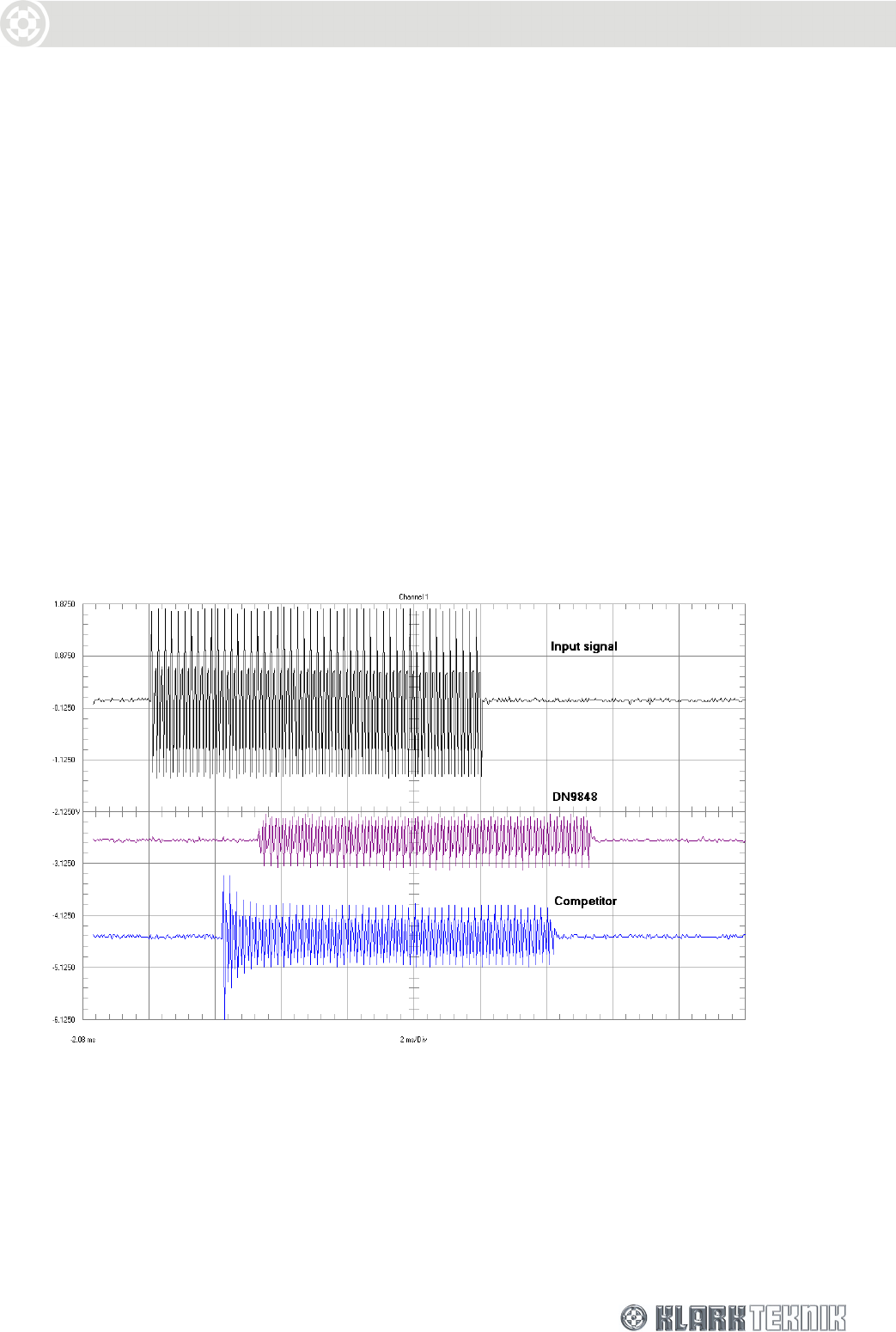
Application Notes
27
10. APPLICATION NOTES
10.1. The Advantage of DN9848 Look-Ahead Limiters
The limiter in a loudspeaker processor is the last line of defence in protecting the speaker drivers
from damage, and as such it has a very specific and critical job to do. One of the chief modes of
loudspeaker failure is driver over-excursion, and unless the limiter is designed to act instantly in
response to sudden increases in level, it will allow through brief transients that can cause damage
through over-excursion. All dynamics processors take a finite amount of time to respond to a change
in input level, and unless additional steps are taken the result is that the input signal is initially let
through at anything up to its full level, until the gain element in the limiter can act in response to the
increase in signal level.
The DN9848 exploits the fact that digital signal processing works on a sample-by-sample basis (the
signal data samples are clocked through the unit at the sample rate of 48 kHz) and that there is a
small delay through each processing block, and literally ‘looks-ahead’ further back in the signal chain
to sample the data for the limiter side chain, so that the limiter can apply the required gain reduction
on an instantaneous sample-by-sample basis, so that the limiter never lets through any dangerous
transients.
In the example below a 10 kHz tone burst of 10 ms duration has been used as the input signal and
the output of both a DN9848 and a leading competitor are shown. Note the very large transient of
the competitor unit which does not have a look-ahead limiter.
Signal source: Audio Precision System One
Settings: Waveform: Burst – Normal. Frequency: 10.0 kHz. Burst: 10 ms. Interval: 100 ms. High Level: +10.0 dBu Low level: -
40.0 dBu
DN9848 settings: HPF: 1.25kHz Lnk-Ril 24dB/Oct. LPF: 20kHz Lnk-Ril 24dB/Oct. Limiter Threshold: 0.0dBu Release: 50ms
Response: Hard Knee
Competitor settings: HPF: 1.26kHz Lnk-Ril 24dB/Oct. LPF: 22kHz Lnk-Ril 24dB/Oct. Limiter Threshold: 0.0dBu Attack &
Release: Automatic
All other settings are default on both units.
As with all units that use sigma-delta ADC and DAC converters, there is a propagation delay from
input to output, 3.2 ms for the DN9848 and 2.1 ms for the competitor unit, the additional delay in


















